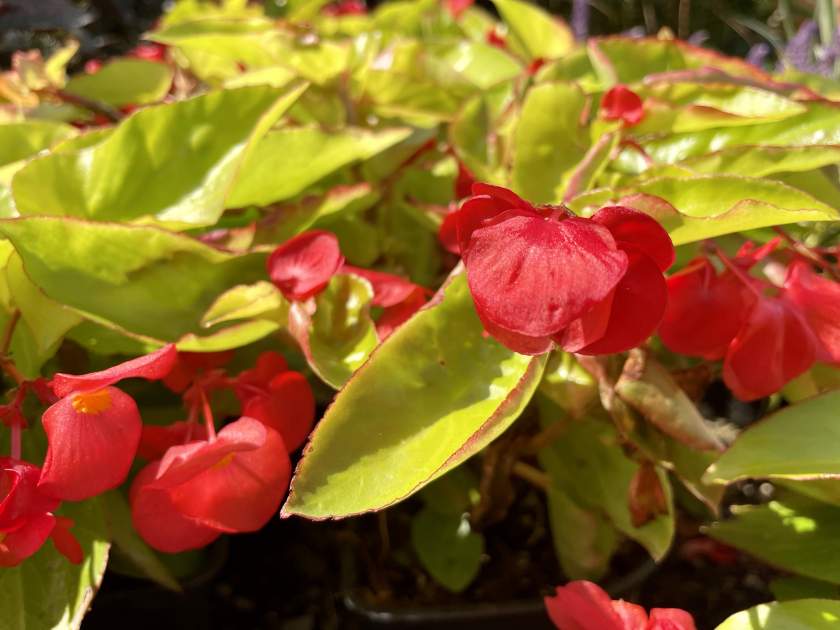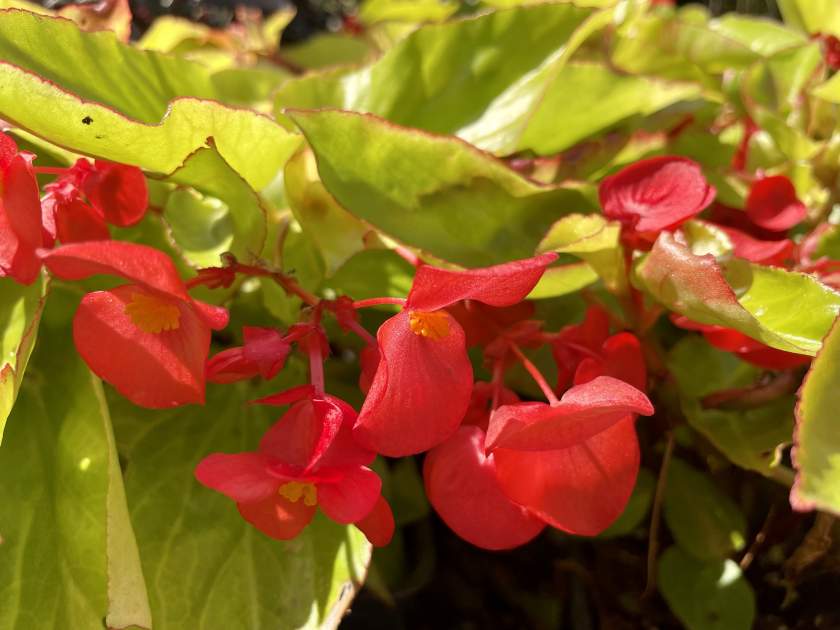Begonia ‘Canary Wings’: Vibrant Foliage and Showy Blooms
Introduction: Begonia ‘Canary Wings’ is a stunning cultivar of cane-like begonias in the Begoniaceae family. With its golden-to-chartreuse leaves and bright red flowers, this begonia hybrid brings a splash of color and beauty to any garden or indoor space. It was hybridized by Jared Edward Hughes of Groovy Plants Ranch, LLC, and introduced in 2016. In this article, we will delve into the characteristics and cultivation tips for Begonia ‘Canary Wings’, providing valuable insights for both begonia enthusiasts and gardening enthusiasts looking to add a touch of vibrancy to their landscapes.
Characteristics:
Begonia ‘Canary Wings’ is an upright/mounded begonia that showcases stunning foliage and striking red flowers. The leaves start out golden and mature to chartreuse, creating a captivating display of color. This cultivar reaches a height of 12 to 18 inches and spreads to a similar width. It has a clumping, arching growth pattern that adds an attractive dimension to gardens and containers.
Cultivation of Begonia ‘Canary Wings’:
Sunlight: Begonia ‘Canary Wings’ thrives in part shade conditions. While it can tolerate some full sun, it is best to provide it with bright light without exposing it to excessive direct sunlight. Avoid the afternoon sun, as it can scorch the delicate foliage.
Watering: Medium watering is suitable for Begonia ‘Canary Wings’. Keep the soil consistently moist, but avoid overwatering, as excessive moisture can lead to root and stem rots. During winter or periods of slow growth, reduce watering frequency, allowing the top inch of soil to dry out before watering again.
Soil: Well-drained and humus-rich soil is essential for the successful growth of Begonia ‘Canary Wings’. It thrives in a loose, well-aerated soil mixture that retains moisture without becoming waterlogged. A mixture of peat moss, perlite, and organic compost provides an ideal growing medium.
Pest and Disease Control: Begonia ‘Canary Wings’ is relatively resistant to pests and diseases. However, it can be susceptible to common begonia pests such as aphids, mealybugs, and spider mites. Regularly inspect the plant for any signs of infestation and promptly treat them with insecticidal soap or neem oil. Ensure good air circulation around the plant and avoid overwatering to prevent fungal diseases.
Propagation:
Begonia ‘Canary Wings’ can be propagated through stem cuttings or division.
Stem Cuttings: Take 3 to 4-inch stem cuttings from healthy plants. Remove the lower leaves and dip the cut end in a rooting hormone. Plant the cuttings in a well-draining potting mix and place them in a warm and humid environment. Keep the soil consistently moist until roots develop, which usually takes a few weeks.
Division: As the plant matures and develops multiple stems, it can be divided to create new plants. Carefully remove the plant from its container or garden bed and gently separate the root clumps into individual sections. Plant each section in its own container or desired location, ensuring they receive proper care and watering.
By following these cultivation and propagation techniques, gardeners can enjoy the vibrant foliage and showy blooms of Begonia ‘Canary Wings’. Whether grown as an indoor plant or incorporated into outdoor landscapes, this begonia cultivar brings a touch of charm and vibrancy to any setting.





